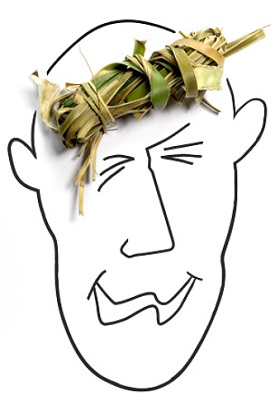Jan 06, 2026
Jan 06, 2026
 A headache is one of the body's most common complaint which most people experience during their lifetime. At times it is a powerful alarm indicating a serious physical or psychological overload on the human system. The World Health Organization (WHO) reports that almost half of the entire adult population of the world experience a headache in one year.
A headache is one of the body's most common complaint which most people experience during their lifetime. At times it is a powerful alarm indicating a serious physical or psychological overload on the human system. The World Health Organization (WHO) reports that almost half of the entire adult population of the world experience a headache in one year.
Causes
A headache can occur in a part of the head, and radiate across the head from that point. It can be sharp, throbbing or dull and can occur suddenly or develop gradually. It can last for less than an hour or continue for several days. The International Headache Society (IHS) categorizes headaches as primary, when not caused by another condition; or secondary, when there is an another disorder or cause in the human body.
Primary Headaches
These are caused directly by the over-activity and problems with the structures in the head that are pain-sensitive including the blood vessels, muscles, and nerves of the head and neck. The common primary headaches include migraines, cluster headaches, and tension headaches.
Secondary Headaches
These headaches happen when other conditions or disorders in the body stimulate the pain-sensitive nerves
of the head. A wide range of different factors cause secondary headaches, and these include: alcohol-induced hangover, brain tumor, blood clots, bleeding around the brain, head injury and concussion, dehydration, meningitis, glaucoma, influenza, panic attacks, anxiety, depression, and many others.Secondary headaches can be a symptom of a serious systemic disease, and prompt medical advice should be obtained.
Types of Headaches
Tension headaches are the most common form of primary headaches. They begin gradually in the middle of the day. The causes include anxiety, muscular tension and bad posture.
Migraines:
The headache usually starts on one side of the head associated with blurred vision, throbbing pain, light-headedness and nausea which may last for a few hours or a couple of days.
Rebound Headaches:
These are headaches caused by an excessive use of medicines to treat the symptoms. They are the most common cause of secondary headaches.There is associated neck pain, restlessness, a feeling of nasal stuffiness, and loss of sleep.
Cluster Headaches:
They occur suddenly, one to eight times a day, and may last for a period of weeks or months. The pain is one-sided, serious, sharp or burning, and usually located around one eye.
Thunderclap Headaches:
These are sudden and severe headaches due to intracranial hemorrhage, cerebral thrombosis, and meningitis. Immediate medical care is needed.
Diagnosis & Treatment
Investigation in serious cases include, blood tests; X-rays, brain scans, CT, and MRI. Rest and pain relief medication is indicated supervised by a physician. Self-medication should be avoided.
Alternative Treatment Forms
These include accupuncture, accupressure, behavioral therapy, herbal therapy, hypnosis, and meditation.
Lastly, a headache is a warning alarm and should not be taken lightly. Expert attention must be sought promptly.
Image (C) gettyimages.com
07-May-2017
More by : Dr. Frank S. K. Barar